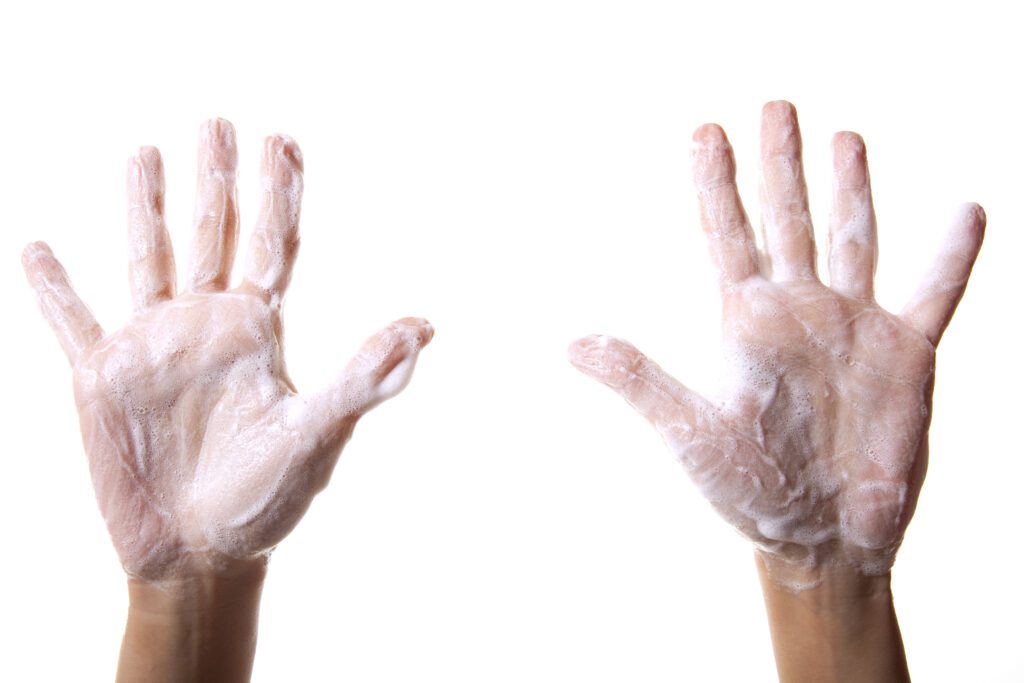Give Bad Bacteria the Stick Up with these Simple Steps
Germs. The uninvited guest. The invisible menace. They are everywhere, even in places that look spotless. So how can you tell if something is truly clean?
According to Joe Rubino, head microbiologist for Lysol, there are two types of clean. There is the visual clean when a surface looks clean but still feels slimy and rough. The other type of clean is when the surface looks clean and is smooth but has bacteria and viruses on it.
“There is no product out there that can truly free a surface of viruses,” he says. “But the products can eliminate the germs to a safer level.”
What people call germs are actually several different entities, says Dr. Sergio Seoane, a Winter Haven family practice physician and Polk County Medical Association member. They include bacteria, viruses, fungi, and protozoa that have the potential to cause disease.
In avoiding sickness from germs, Seoane says, “The first thing you need to do is make sure that all your immunizations are up to date for both children and adults.”
Whether you are cooking meat or changing a diaper, Rubino recommends being prepared beforehand and touching as few things as possible. “Be aware of what you touch, and go back to clean and sanitize what you did touch,” he says.
Even after vigilantly cleaning and disinfecting the area, germs, like life, will still happen. “That clean surface will get re-contaminated from the bacteria in the air,” Rubino points out.
So don’t worry about over-cleaning — it’s impossible. As Rubino says, bacteria are not going to become extinct.
Remember to wash your hands with soap and water, or use hand sanitizer if they aren’t immediately available.
“The single most important thing that anyone can do to avoid getting sick is wash your hands,” Seoane says. “Wash your hands. Wash your hands, and wash your hands again. A common question I get asked by my patients is that I seem to never get sick. I tell my patients my secret is simple. I wash my hands before and after I see them. If I’m not sure, I wash my hands again.”
Specifically, you need to wash your hands after using the bathroom, wash your hands before preparing or eating food, wash your hands after you blow your nose or sneeze, wash your hands after you touch a pet and if you’re in contact with anybody that appears sick wash your hands after contact with them, he says.
“I usually avoid touching my face, especially my mouth nose or eyes when I go to public places,” Seoane says. “The reason I do this is when I touch a door knob or door handle, if someone with a viral infection has just touched it before me, then I have a chance of acquiring that virus, especially if I also touch that door knob and then touch my nose, mouth or eyes. There’s no disadvantage or harm by washing your hands and being clean. The only thing I have found is that it does tend to dry your skin if you wash your hands 40 or 50 times a day.”
Seoane says that while hand sanitizer isn’t a substitute for soap and water, it can act as a good supplement.
For hard surfaces, quickly extinguish germs with wipes or sprays (either work well) that promise to kill 99.9 percent of the germs.
“These microorganisms perform vital functions for us, they help us digest certain foods, they manufacture certain vitamins that are essential for us and their presence decreases the likelihood that the bad bacteria will gain a foothold in our gut,” Seoane says. “We have a symbiotic relationship with the bacteria in our gut.”
While it is good to be exposed to germs over your lifetime to build up your immune system, you will get your share.
CREDITS
story by Apryl Chapman Thomas
